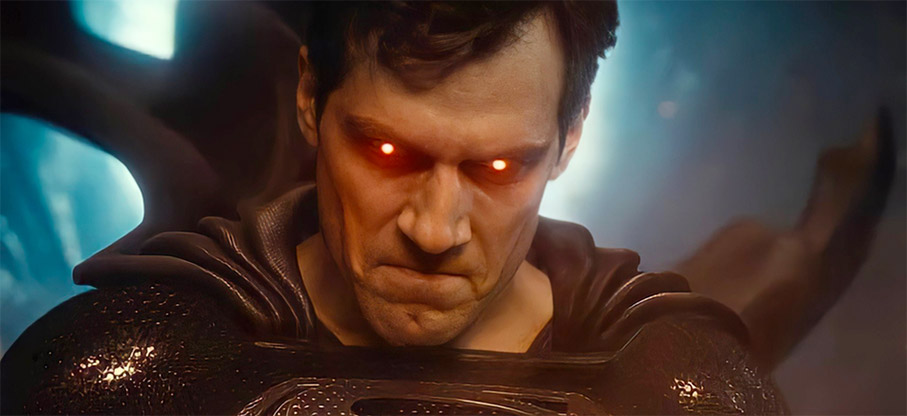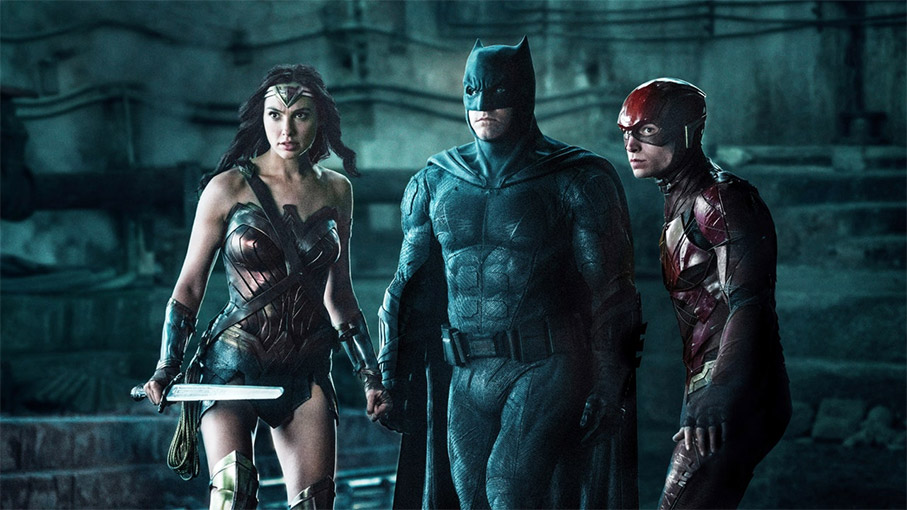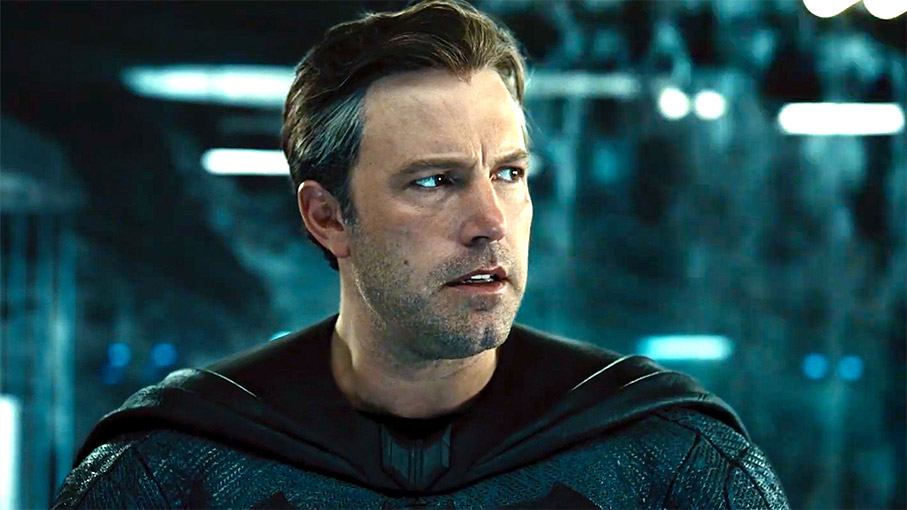|
Superhero real estate has considerably grown over the past decade, with both film and television producing no small amount of fare. There has always been a peppering of caped crusaders on our screens since George Reeves' Superman back in the 1950s and the superhero paradigm, taken from comics of course, has stayed in the collective consciousness ever since. This appeal has grown to become somewhat of a mainstream obsession, largely down to the nostalgia factor for adults who grew up on a diet of these fantastical characters as well as a fresh audience in their children. We now see the Marvel and DC universes compete in the arena of our living rooms and cinema screens on a regular basis, with both titans of the genre churning out movies and TV series pretty much non-stop. If you are under 40 with even a pinch of the nerd about you, chances are you sit on one side of the DC vs Marvel fence. I grew up reading the comics of both companies, and my favourite team was the X-Men and my favourite solo hero was (and still is) Batman. I read Superman and a bit of Spiderman and The Flash, so I was not a partisan child of the comic book. This has stood me in good geek stead to assimilate much of both of the warring factions, plus more besides.
I think anyone with an interest in such things would probably agree that when it comes to the film franchises, Marvel has done better. There has been a long and complex history of Marvel rights and assets being sold and bought back over the years, but I will keep this simple. The early 2000s’ X-Men, Hulk and Spiderman films kicked off an interest for all things cinematically Stan Lee, despite a fluctuation in quality. Then, unified under the Disney banner, their plan for world domination included drip-feeding new Hulk, Iron Man and Thor stand-alones in preparation for 2012’s Avengers team up. From there came a successful catalogue of Avengers films and spin offs with Spiderman entering the 'Marvel Cinematic Universe', or MCU as it has come to be known. The latest wave of Marvel films have continued to be highly acclaimed.

DC Comics, the older of the two warring tribes, has had a rather more turbulent recent film history. A high watermark was reached with Christopher Nolan's Batman trilogy and although it had a steady television output with the growing 'Arrowverse', DC’s cinematic reboot of Superman, directed by Zack Snyder and titled Man of Steel, was seen as some as overly dark and moody. The eagerly awaited sequel Batman vs Superman: Dawn of Justice saw Snyder's reinvention of Batman and Wonder Woman. There were conflicting opinions on how these much-loved characters had been moulded by the hands of Snyder, but the film itself had a similar dour feel to Man of Steel. So when it came to a critical part in the Justice League production where Snyder grudgingly transferred the directorial chair to Joss Whedon, it was clear the studio was after a lighter tone for their heavyweight Avengers competitor. The result was indeed striving to be a more humorous affair, but the moments of levity sometimes felt laboured or shoehorned in (as they often actually were). The arch-villain of the piece was toned down in appearance from Snyder’s vision and exposition was removed or altered for the theatrical Whedon-helmed release. The end product was inconsistent in mood and rather light on plot details. So Snyder fans and general superhero geeks like myself were rather excited at the idea of Justice League being restored to Snyder's version. Basically, while some were honing their baking skills or attempting Joe Wick’s fitness during lockdown, Zack Snyder was lovingly assembling a version of the film that promised much to fans and critics. This was a lengthy and expensive enterprise that was far more than just a re-edit and a makeover. It eventually cost Warner Brothers £70 million dollars to finish the project, with most of this budget going to reshoots. There were also substantiated reports on the Snyder cut being twice as long as the first film. So there expectations were high when its release came on 18th March, available on Sky Cinema and Now TV here in the UK...
As we enter the subjective realm and this being the review part of this article, I will give some personal thoughts on the films running up to the focal point that is Justice League 2021. I was a child of the 1980s, so I grew up with the late, great Christopher Reeve as Superman looming large over the cinematic world of superheroes, and it was these films that planted the seed that has since blossomed into a lifelong love of the superhero genre. The 90s saw TV have a crack with The New Adventures of Superman (Lois and Clark in the U.S.), which I enjoyed despite its soap opera tone. I was a bit older when Smallville hit the small screen and as a cool teen I admit to not really being interested in something I saw as essentially Dawson's Creek with the odd bit of action. But Superman still owned a special place in my heart, and when Snyder's Man of Steel came out I found it too much at odds with the Reeve and Donner blueprint that I knew so well. I was more of a fan of Bryan Singer's Superman Returns from 2006, which wore its Donner era influences proudly on its sleeve, and by doing so was not a huge success. After several revisits to Man of Steel, I have acclimatised myself to the Snyder approach, and there is something to be said for injecting a darkness into the Superman subgenre in a way that has never really been done previously. Batman vs Superman: Dawn of Justice was a continuation of that look and feel but was never really elevated beyond a collection of set pieces, where any non-action was mostly flat exposition and lacklustre characterisation. We can lay that at the door of screenwriter for both films, David S. Goyer, whose CV runs from the inspired to the plain. Justice League version 1 jettisoned Goyer in favour of Chris Terrio, working on a Snyder outline which was altered by Whedon when he took over. This meant more jokes and slapstick, none of which I thought was hugely funny, the knockabout whimsy just not being able to hit that sweet spot that Marvel films manage to hit time and again. A lack of substance in the script seemed to have followed it from Goyer's last efforts and were made for a story arc that was never truly engaging.
Now, finally, jumping right into the action, and with just the opening scenes one can observe some of Snyder's intentions from the outset. Firstly, it begins with something we will see many times throughout this film, a slow motion sequence, one dramatically depicting the death cry of Superman (at the end of Dawn of Justice) and how it makes the globally scattered mother boxes begin to open. It is an important part of the plot and already a deviation from the Whedon version, as Snyder has a larger and more coherent narrative structure, beginning with the reasons baddie Steppenwolf has come to Earth to wreak chaos. It also sets out the various habitats and locations in which the action will be divided throughout the film.

Then, in a wintry landscape, comes Bruce Wayne (Ben Affleck) to a remote Eastern European fishing village in search of Aquaman (Jason Momoa). This scene introduces the signature Snyder saturated colour palette as well as bringing in the titles in a low-key fashion. Whether the fact that the first words spoken, “Bruce Wayne,” are said in an accent similar to Knox's vampire imitation in Tim Burton's 1989 Batman movie is intentional or not I don't know (but I like to think it is). Anyway, by the end of the scene there is already a noticeable change in tone and pace to the first theatrical version, and this continues throughout the course of the film. The other key players in the story all enjoy their own extended introductions, each with their own slow-motion parts in a section of the film that borrows from the tropes of a heist movie in its 'recruiting the team' paradigm. One can also see here how this film has different ideas about the characters to the earlier one. Wonder Woman is seen as a little more brutal, slamming some criminals against a wall with bone crunching and bloody effect in her introductory action scene – this, and a few more slight additions, were not in the Whedon cut. It’s confirmed throughout that WW a.k.a Diana Prince (Gal Gadot) is more a force to be reckoned with instead of a slightly mother hen type figure that Whedon's amendments brought out. Ezra Miller's Barry Allen/Flash has had his wisecracking trimmed to a withstand-able amount. It is a shame that as his character most benefits from slow motion – due to his superspeed – the frequency with which this dramatic tool is utilised elsewhere takes away from his Flash ability visuals. I think this was one area that Snyder struggled to make his own – after all, fans will be very aware of how The Flash TV series represents the whole 'speedster' thing with a style it has honed over its seven seasons.
Cyborg is the only league member to benefit from substantial character building. If this was not such an ensemble piece, one could call him the central protagonist and he is an emotional anchor point throughout, the relationship with his father the most human and grounded part of this fantastical world. Performance-wise, each actor holds their own without blowing any of the others off the screen, although none are really given a lot to do when it comes to actual acting. Jason Momoa doesn't do much but frown, act grumpy and pose a lot (some of his scenes play like pretentious aftershave adverts) and his small bits of comedy business probably fall flattest, and there is some stiff competition here! Gadot holds the most gravity for me, and it is an admirable adjustment to see her in a more powerful light than in the Whedon cut, in line with the 2017 Wonder Woman standalone movie (the recent sequel to which was not so acclaimed). Ray Fisher as Cyborg is the most naturalistic, which is saying something as his face is the only non-CGI part of him for most of the film, but the time taken on his story arc helps you to see him as more of a rounded personality than the rest of the stars. Miller has some work to do as the designated jester of the piece, (especially as Snyder has cut out most of the comedy), but his Spiderman-esque shtick just struck me as irritating. Cavill, the Snyder Superman, has quite a bit less screen time than the others, although manages to do his bit pretty well – I enjoyed the sequence in which he fights the JL, because coming back to life has understandably made him a bit confused and angry, reminding me of when Reeve went all evil in Superman 3. I admit to slightly wishing he succeeded in this effort to destroy them though, after 3 hours with that lot!

Of course, Batfleck is conspicuous by his absence in the above run down, and that is because Batman is kind of my thing, so I wanted to deal with him separately. There’s no question that Ben Affleck as Bruce Wayne and as Batman quickly became a controversial choice for Dawn of Justice, with some pretty much writing him off out of hand. After the film had been out for a while, some fans did warm to him – I personally think he does a good job in DoJ, despite the film itself being a bit of a mess. I would say he does a better Bruce Wayne than Batman. With the first Justice League edit he was also given a slightly less dour personality, with some quips of his own, yet came across a little more George Clooney than Adam West. It certainly benefits him having this toned down, with exception of the Tony Stark moment when Barry asks him what his superpowers are – “I'm rich.” That, for me, was just enough Michael Keaton to be acceptable. Unfortunately, his main function in both movies is to round up the gang. He has some nice moments with a very passable Alfred (Jeremy Irons), who in this version of the character is a bit of a Bond 'Q' type who, much to the chagrin of us anal Batfans, must insist on calling him Master Wayne, not Master Bruce. Anyway, as much as Batman has some cool parts to play in the action, with big expensive toys, his cheerleader Bruce persona was irritating and didn't gel with the darker depiction in the previous film. It is character development to see him become optimistic, but it isn't well thought out or believable, or particularly fun. Thankfully, you can get your fix of a suitably dark Dark Knight in what have been termed the 'knightmare' sequences. A continuation from the one in Dawn of Justice, these sandy dystopian scenes refer to a possible future in which the big baddie Darkseid has succeeded in conquering Earth. It is assumed that this timeline would continue in a sequel that will now never be seen and contains a very highly anticipated cameo by Jared Leto, reprising his Joker role from the 2016 Suicide Squad film. Snyder's attempt to undo the disappointing work of Suicide Squad’s version of this iconic character and giving audiences a Snyder universe Batman and Joker scene can be seen as a success in that Leto under Snyder's direction gives a more conventional performance of the role. It is a nice scene, and gives Affleck a chance to show more of the beast behind the cowl while filling in some details hinted at in Dawn of Justice. The thing is, as with entire Epilogue section, setting up things that will never be continued just served to be a frustration more than anything else for me.
It is worth noting here that by this time it should be quite obvious this film very much benefits from being looked at in the context of a sequel to Man of Steel and Dawn of Justice, as there are quite a few things that just do not work when watched as a standalone piece, not just because of the need for the prior knowledge these films provide, but also due to the fact that it has been scripted as part of a series of films, with sequel teasers and setups still intact. Some of this thus leads to a little confusion if you are not sufficiently clued up to link the dots. It would be fair to say Snyder and company have made this film to satisfy a very particular audience, and there may have been a time that such indulgence in making a film almost solely for the hardcore fans would not be wise. Yet Snyder benefits from a period in film history where the superhero fan base is huge enough to give it the go-ahead, as well as the fact that he is effectively remixing a film already in existence, albeit with a budget with which ten indie movies could be made!
| CONCLUSION AND THE IMPORTANCE OF BEING SOCIAL |
|
Zack Snyder's Justice League heralds a time where the strength of a superhero movie auteur’s publicity alone can cause enough buzz to sell a picture, and this is in no small part down to the power of social media. But interestingly, it has also influenced the choices made in the process of crafting the reconstruction, meaning that old Zack had his ear to the ground (or eye on the screen) of fans’ excited online chats and decided at nearly every turn to do what they demanded. This is still ongoing, as most recently there has been an issue with the fact a line that the Joker speaks in the trailer is not actually in the film. Now, Snyder has released yet another version, which is in black and white and includes the missing dialogue from an aforementioned knightmare sequence. A cynic could say this was his plan all along in leaving the line out, or it could have been due to the online unrest that influenced the decision to give the people what they wanted. It does seem at this stage that he and Warner Brothers are somewhat milking this thing for all it's worth. The digital grapevine has buzzed with rumours that a sequel could now be considered due to its success, but as a grounded and practical fan of flying men in capes, I prefer to stay realistic and not expect any more overlong, slow-mo packed Snyder products in this particular franchise.
Well, perhaps that's a good thing, when it comes to the future of the DCEU, I for one look forward with cautious optimism to the upcoming Matt Reeves-helmed The Batman as the next reinvention of Kane and Finger's enduring dark knight. For fans of the other Justice Leaguers, Aquaman and Wonder Woman have their own standalone franchise sequels in the pipeline, as well as Ezra Miller starring in his own The Flash movie due for release next winter. This is not to mention a whole host of other DC movies and TV series, as well as works from Marvel and others, so it would be fair to say this superhero juggernaut (wink wink) is not letting up any time soon.
|